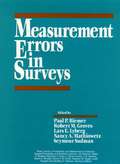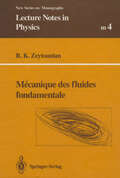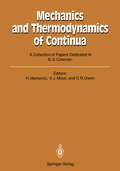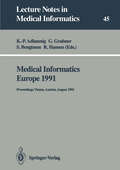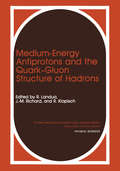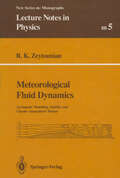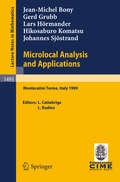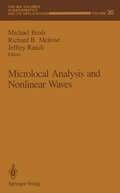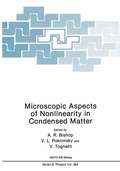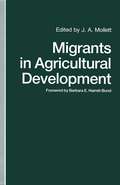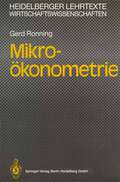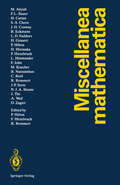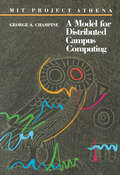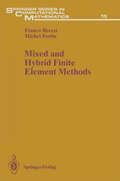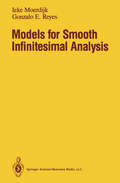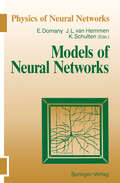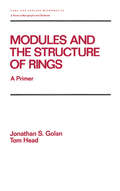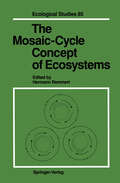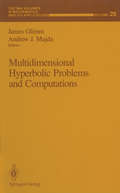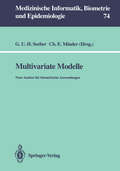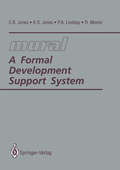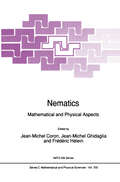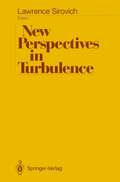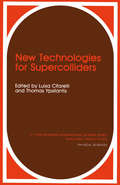- Table View
- List View
Measurement Errors in Surveys (Wiley Series in Probability and Statistics #173)
by Paul P. Biemer Robert M. Groves Lars E. Lyberg Nancy A. Mathiowetz Seymour SudmanWILEY-INTERSCIENCE PAPERBACK SERIES The Wiley-Interscience Paperback Series consists of selected books that have been made more accessible to consumers in an effort to increase global appeal and general circulation. With these new unabridged softcover volumes, Wiley hopes to extend the lives of these works by making them available to future generations of statisticians, mathematicians, and scientists. "This book will be an aid to survey statisticians and to research workers who must work with survey data." –Short Book Reviews, International Statistical Institute Measurement Errors in Surveys documents the current state of the field, reports new research findings, and promotes interdisciplinary exchanges in modeling, assessing, and reducing measurement errors in surveys. Providing a fundamental approach to measurement errors, the book features sections on the questionnaire, respondents and responses, interviewers and other means of data collection, the respondent-interviewer relationship, and the effects of measurement errors on estimation and data analysis.
Mecanique des fluides fondamentale (Lecture Notes in Physics Monographs #4)
by Radyadour K. ZeytounianCe cours de mecanique des fluides est avant tout un cours theorique qui repond aux questions fondamentales de ce sujet de recherche. Les quatre premiers chapitres presentent les equations propres a determiner l'ecoulement de fluide considere et diverses solutions. Les chapitres 5 et 6sont consacres aux problemes lies la stabilite, aux bifurcations et aux comportements chaotiques. Le livre donne un vision globale des questions traitees en mecanique des fluides qui sont a la base de toute la recherche, de la modelisation et de toutes les applications dans ce domaine.
Mechanics and Thermodynamics of Continua: A Collection of Papers Dedicated to B.D. Coleman on His Sixtieth Birthday
by Hershel Markovitz Victor J. Mizel David R. OwenReprinted from Archive for Rational Mechanics and Analysis edited by C. Truesdell
Medical Informatics Europe 1991: Proceedings, Vienna, Austria, August 19–22, 1991 (Lecture Notes in Medical Informatics #45)
by Klaus-Peter Adlassnig Georg Grabner Stellan Bengtsson Rolf HansenThis volume contains the proceedings of the Tenth International Congress on Medical Informatics, MIE 91, that will be held in Vienna, Austria, August 19-22, 1991. The MIE 91 Congress was organized by the European Federation for Medical Informatics (EFMI) in cooperation with the Austrian Computer Society (OCG) and the Austrian Society for Biomedi cal Engineering (OGBMT). It follows the previous congresses in Cambridge (1978), Berlin (1979), Toulouse (1981), Dublin (1982), Brussels (1984), Helsinki (1985), Rome (1987), Oslo (1988), and the Congress 1990 in Glasgow. The proceedings contain 199 contributions to the MIE 91 Congress. They cover all presentations which are part of the scientific programme of MIE 91, among them 157 paper presentations with an average of five pages, 28 poster presentations again with an average of five pages, and 14 abstracts of demonstrations with an average of one page. The papers included were selected by an International Programme Committee out of over 300 submissions after careful review by at least two international reviewers (for whose estimable efforts we are especially thankful). The recommendations of the re viewers were incorporated in the final texts. Some papers were reworked by a professional translator to obtain a high quality of presentation. Several submissions could not be considered for presenta tion at MIE 91 because of shortage of congress time and limitations in the number of pages of the proceedings.
Medium-Energy Antiprotons and the Quark—Gluon Structure of Hadrons (Ettore Majorana International Science Series #58)
by R. Klapisch R. Landua J. M. RichardThe fourth course of the International School on Physics with Low Energy Antiprotons was held in Erice, Sicily, at the Ettore Majorana Centre for Scientific Culture from 25 to 31 January, 1990. The previous courses covered topics related to fundamental symmetries, light and heavy quark spectroscopy, and antiproton-nucleus interactions. The purpose of this school is to review theoretical and experimental aspects of low energy antiproton physics concerning the quark-gluon structure of hadrons and the dynamics of the. antiproton-nucleon interaction. Another important objective is the discussion of future directions of research with low-and medium-energy antiprotons in the context of future medium energy facilities at CERN and elsewhere. These proceedings contain both the tutorial lectures and the various contributions presented during the school by the participants. The proceedings have been organised in three sections. The first section is devoted to the theoretical lectures and contributions. The selection of the various subjects wants to emphasize the correlation between antiproton-nucleon physics and the underlying description in terms of quarks and gluons. The second section contains an overview about 35 years of experiments with antiprotons. It gives an introduction to the particle physics aspects of the field by outlining the historical development of experiment and theory, and by describing the motivation and the results of three recent LEAR experiments in more detail. The third section contains most of the contributions of the participants describing in more detail certain aspects of current or planned experiments at LEAR.
Meteorological Fluid Dynamics: Asymptotic Modelling, Stability and Chaotic Atmospheric Motion (Lecture Notes in Physics Monographs #5)
by Radyadour K. ZeytounianThe author considers meteorology as a part of fluid dynamics. He tries to derive the properties of atmospheric flows from a rational analysis of the Navier-Stokes equations, at the same time analyzing various types of initial and boundary problems. This approach to simulate nature by models from fluid dynamics will be of interest to both scientists and students of physics and theoretical meteorology.
Microlocal Analysis and Applications: Lectures given at the 2nd Session of the Centro Internazionale Matematico Estivo (C.I.M.E.) held at Montecatini Terme, Italy, July 3-11, 1989 (Lecture Notes in Mathematics #1495)
by J. M. Bony G. Grubb L. Hörmander H. Komatsu J. SjöstrandMicrolocal Analysis and Nonlinear Waves (The IMA Volumes in Mathematics and its Applications #30)
by Michael Beals Richard B. Melrose Jeffrey RauchThis IMA Volume in Mathematics and its Applications MICROLOCAL ANALYSIS AND NONLINEAR WAVES is based on the proceedings of a workshop which was an integral part of the 1988- 1989 IMA program on "Nonlinear Waves". We thank Michael Beals, Richard Melrose and Jeffrey Rauch for organizing the meeting and editing this proceedings volume. We also take this opportunity to thank the National Science Foundation whose financial support made the workshop possible. A vner Friedman Willard Miller, Jr. PREFACE Microlocal analysis is natural and very successful in the study of the propagation of linear hyperbolic waves. For example consider the initial value problem Pu = f E e'(RHd), supp f C {t ;::: O} u = 0 for t < o. If P( t, x, Dt,x) is a strictly hyperbolic operator or system then the singular support of f gives an upper bound for the singular support of u (Courant-Lax, Lax, Ludwig), namely singsupp u C the union of forward rays passing through the singular support of f.
Microscopic Aspects of Nonlinearity in Condensed Matter (Nato Science Series B: #264)
by Alan R. Bishop V. L. Pokrovsky V. TognettiProceedings of a NATO ARW held in Florence, Italy, June 7--13, 1990
Migrants in Agricultural Development: A Study of Intrarural Migration
by J.A. MollettA study which examines the economic rationale for migration and its effect on agricultural development. It features case studies of rural-to-rural migration in 10 countries, making a comparative assessment of forced and spontaneous migration.
Miscellanea Mathematica
by M. Atiyah F. L. Bauer H. Cartan S. S. Chern J. H. Conway B. Eckmann L. D. Faddeev H. Grauert P. Hilton H. Hironaka F. Hirzebruch L. Hörmander F. John M. Koecher R. Narasimhan C. Reid R. Remmert J-P. Serre N.J.A. Sloane J. Tits A. Weil D. ZagierMIT Project Athena: A Model for Distributed Campus Computing
by Bozzano G LuisaA hands-on account of the design, implementation, and performance of Project Athena. Based on thousands of pages of reports and the author's own experience, this important book lets you in on the design, implementation, and performance of Project Athena - now a production system of networked workstations that is replacing time-sharing (which MIT also pioneered) as the preferred model of computing at MIT. The book is organized in four parts, covering management, pedagogy, technology, and administration. Appendixes describe deployment of Project Athena systems at five other schools, provide guidelines for installation, and recommend end-user policies.
Mixed and Hybrid Finite Element Methods (Springer Series in Computational Mathematics #15)
by Franco Brezzi Michel FortinResearch on non-standard finite element methods is evolving rapidly and in this text Brezzi and Fortin give a general framework in which the development is taking place. The presentation is built around a few classic examples: Dirichlet's problem, Stokes problem, Linear elasticity. The authors provide with this publication an analysis of the methods in order to understand their properties as thoroughly as possible.
Models for Smooth Infinitesimal Analysis
by Ieke Moerdijk Gonzalo E. ReyesThe aim of this book is to construct categories of spaces which contain all the C?-manifolds, but in addition infinitesimal spaces and arbitrary function spaces. To this end, the techniques of Grothendieck toposes (and the logic inherent to them) are explained at a leisurely pace and applied. By discussing topics such as integration, cohomology and vector bundles in the new context, the adequacy of these new spaces for analysis and geometry will be illustrated and the connection to the classical approach to C?-manifolds will be explained.
Models of Neural Networks (Physics of Neural Networks)
by Eytan Domany J. Leo Van Hemmen Klaus SchultenOne of the great inteJlectual cha1lenges for the next few decades is the question of brain organization. What is the basic mechanism for storage of memory? What are the processes that serve as the interphase between the basically chemical processes of the body and the very specific and nonstatistical operations in the brain? Above all. how is concept formation achieved in the human brain? I wonder whether the spirit of the physics that will be involved in these studies will not be akin to that which moved the founders of the ''rational foundation of thermodynamics". CN. Yangl 10 The human brain is said 10 have roughly 10 neurons connected through about 14 10 synapses. Each neuron is itself a complex device which compares and integrates incoming electrical signals and relays a nonlinear response to other neurons. The brain certainly exceeds in complexity any system which physicists have studied in the past. Nevertheless, there do exist many analogies of the We have witnessed during the last decade brain to simpler physical systems.
Modules and the Structure of Rings: A Primer
by GolanThis textbook is designed for students with at least one solid semester of abstract algebra,some linear algebra background, and no previous knowledge of module theory. Modulesand the Structure of Rings details the use of modules over a ring as a means of consideringthe structure of the ring itself--explaining the mathematics and "inductivereasoning" used in working on ring theory challenges and emphasizing modules insteadof rings.Stressing the inductive aspect of mathematical research underlying the formal deductivestyle of the literature, this volume offers vital background on current methods for solvinghard classification problems of algebraic structures. Written in an informal butcompletely rigorous style, Modules and the Structure of Rings clarifies sophisticatedproofs ... avoids the formalism of category theory ... aids independent study or seminarwork ... and supplies end-of-chapter problems.This book serves as an excellent primary.text for upper-level undergraduate and graduatestudents in one-semester courses on ring or module theory-laying a foundation formore advanced study of homological algebra or module theory.
Modules and the Structure of Rings: A Primer
by GolanThis textbook is designed for students with at least one solid semester of abstract algebra,some linear algebra background, and no previous knowledge of module theory. Modulesand the Structure of Rings details the use of modules over a ring as a means of consideringthe structure of the ring itself--explaining the mathematics and "inductivereasoning" used in working on ring theory challenges and emphasizing modules insteadof rings.Stressing the inductive aspect of mathematical research underlying the formal deductivestyle of the literature, this volume offers vital background on current methods for solvinghard classification problems of algebraic structures. Written in an informal butcompletely rigorous style, Modules and the Structure of Rings clarifies sophisticatedproofs ... avoids the formalism of category theory ... aids independent study or seminarwork ... and supplies end-of-chapter problems.This book serves as an excellent primary.text for upper-level undergraduate and graduatestudents in one-semester courses on ring or module theory-laying a foundation formore advanced study of homological algebra or module theory.
The Mosaic-Cycle Concept of Ecosystems (Ecological Studies #85)
by Hermann RemmertThe first international congress for ecology took place in 1974 in The Hague, its central theme being "Unifying Concepts in Ecology". In the forefront of discussion at that time were questions of constancy, stability and resilience. Such questions have gone slightly out of fashion and the exceptionally precise and well thought-out concepts of that era are seldom applied nowadays. The present book introduces another unifying concept, the concept of the ecological cycle, or, more precisely, the mosaic-cycle concept of ecology. The following chapters have their origin in lectures which were held and discussed at a symposium of the Werner Reimers Stiftung in Bad Homburg. The purpose of the symposium was the preparation of this book. Our warmest thanks go to the Reimers Stiftung for their assistance and hospitality. We should also like to express our gratitude to all participants, to those who contributed to the discussion, and above all to those colleagues whose lectures provided, from a variety of aspects, a critical approach to the mosaic-cycle concept. Marburg, Winter 1990/91 HERMANN REMMERT Contents H. REMMERT The Mosaic-Cycle Concept of Ecosystems - An Overview ......... .
Multidimensional Hyperbolic Problems and Computations (The IMA Volumes in Mathematics and its Applications #29)
by James Glimm Andrew J. MajdaThis IMA Volume in Mathematics and its Applications MULTIDIMENSIONAL HYPERBOLIC PROBLEMS AND COMPUTATIONS is based on the proceedings of a workshop which was an integral part ofthe 1988-89 IMA program on NONLINEAR WAVES. We are grateful to the Scientific Commit tee: James Glimm, Daniel Joseph, Barbara Keyfitz, Andrew Majda, Alan Newell, Peter Olver, David Sattinger and David Schaeffer for planning and implementing an exciting and stimulating year-long program. We especially thank the Work shop Organizers, Andrew Majda and James Glimm, for bringing together many of the major figures in a variety of research fields connected with multidimensional hyperbolic problems. A vner Friedman Willard Miller PREFACE A primary goal of the IMA workshop on Multidimensional Hyperbolic Problems and Computations from April 3-14, 1989 was to emphasize the interdisciplinary nature of contemporary research in this field involving the combination of ideas from the theory of nonlinear partial differential equations, asymptotic methods, numerical computation, and experiments. The twenty-six papers in this volume span a wide cross-section of this research including some papers on the kinetic theory of gases and vortex sheets for incompressible flow in addition to many papers on systems of hyperbolic conservation laws. This volume includes several papers on asymptotic methods such as nonlinear geometric optics, a number of articles applying numerical algorithms such as higher order Godunov methods and front tracking to physical problems along with comparison to experimental data, and also several interesting papers on the rigorous mathematical theory of shock waves.
Multivariate Modelle: Neue Ansätze für biometrische Anwendungen (Medizinische Informatik, Biometrie und Epidemiologie #74)
by Gilg U. H. Seeber Christoph E. MinderDer vorliegende Band besch{ftigt sich mit nicht standardm{~ig verwendeten multivariaten Methoden in der Statistik. Die Darstellung erfolgt anhand von Beispielen aus der Praxis, im Gegensatz zu den meisten Lehrb}chern, die von der mathematischen Theorie herkommen. In der Praxis auftretende Schwierigkeiten werden diskutiert. Neu ist die Betrachtung der Methoden als abh{ngig von den Eigenschaften der Daten, wobei die Autoren gro~en Wert auf eine ad{quate Analyse legen. Der Band vermittelt dem Leser Vorbilder f}r seine eigene praktische Arbeit, indem er die statistische Praxis anhand der Arbeit von versierten Statistikern mit neuen, wenig bekannten Methoden darstellt.
mural: A Formal Development Support System
by C.B. Jones K.D. Jones Peter Lindsay R.D. MooreFormal methods enable computer architecture and software design to be mathematically proved correct before they are implemented. The complexity and time-consuming nature of such proofs have limited the applications of formal methods in the main to defence and safety-critical applications. The mural project (a joint Alvey-funded project between Manchester University and Rutherford Appleton Laboratories) has developed a software support system to help the user of formal methods. mural has created a user-friendly software environment (with extensive use of windows) that makes best use of human talents to produce computer systems that are proved to be correctly designed. Professor Cliff Jones is internationally known as the developer of the VDM system of formal notation (Vienna Development Method). This book describes the requirements, concepts, and realisation of the mural system. The authors present systematically and completely the results of this substantial research project, from the basic theoretical level to its effective implementation. The book will be of equal interest to academics working on formal methods at research level (and perhaps to graduate research students), and to practitioners and software engineers who are using - or who will have to use for defence contracts, etc. - formal methods.
Nematics: Mathematical and Physical Aspects (Nato Science Series C: #332)
by Jean-Michel Coron Jean-Michel Ghidaglia Édéric HéleinThis volume (>Ie) NEMATICS Mathematical and Physical aspects constitutes the proceedings of a workshop which was held at l'Universite de Paris Sud (Orsay) in May 1990. This meeting was an Advanced Research Workshop sponsored by NATO. We gratefully acknowledge the help and support of the NATO Science Committee. Additional support has been provided by the Ministere des affaires etrangeres (Paris) and by the Direction des Recherches et Etudes Techniques (Paris). Also logistic support has been provided by the Association des Numericiens d'Orsay. (*) These proceedings are published in the framework of the "Contrat DRET W 90/316/ AOOO". v Contents (*) FOREWORD v INTRODUCTION 1. M. CORON, 1. M. GHIDAGLIA, F. HELEIN xi AN ENERGY-DECREASING ALGORITHM FOR HARMONIC MAPS F. ALOUGES 1 A COHOMOLOGICAL CRITERION FOR DENSITY OF SMOOTH MAPS IN SOBOLEV SPACES BETWEEN TWO MANIFOLDS F. BETHUEL, 1. M. CORON, F. DEMENGEL, F. HELEIN 15 ON THE MATHEMATICAL MODELING OF TEXTURES IN POLYMERIC LIQUID CRYSTALS M. C. CAmERER 25 A RESULT ON THE GLOBAL EXISTENCE FOR HEAT FLOWS OF HARMONIC MAPS FROM D2 INTO S2 K. C. CHANG, W. Y. DING 37 BLOW-UP ANALYSIS FOR HEAT FLOW OF HARMONIC MAPS Y. CHEN 49 T AYLOR-COUETTE INSTABILITY IN NEMATIC LIQUID CRYSTALS P. E. ClADIS 65 ON A CLASS OF SOLUTIONS IN THE THEORY OF NEMATIC PHASES B. D. COLEMAN, 1. T. JENKINS 93 RHEOLOGY OF THERMOTROPIC NEMATIC LIQUID CRYSTALLINE POLYMERS M. M. DENN, 1. A.
New Perspectives in Turbulence
by Lawrence SirovichThis collection of articles has its origin in a meeting which took place June 12-15, 1989, on the grounds of Salve Regina College in Newport, Rhode Island. The meeting was blessed by beautiful, balmy weather and an idyllic setting. The sessions themselves took place in Ochre Court, one of the elegant and stately old summer cottages for which Newport is acclaimed. Lectures were presented in the grand ballroom overlooking the famous Cliff Walk and Block Island Sound. Counter to general belief, the pleasant surroundings did not appear to encourage truancy or in any other way diminish the quality of the meeting. On the contrary, for the four days of the meeting there was a high level of excitement and optimism about the new perspectives in turbulence, a tone that carried over to lively dinner and evening discussions. The participants represented a broad range of backgrounds, extending from pure mathemat ics to experimental engineering. A dialogue began with the first speakers which cut across the boundaries and gave to the meeting a mood of unity which persisted.
New Technologies for Supercolliders (Ettore Majorana International Science Series #57)
by L. Cifarelli Thomas YpsilantisThe present volume is based on the proceedings of the 12th Workshop of the INFN ELOISATRON Project, held at the "Ettore Majorana" Centre for Scientific Culture (EMCSC), Erice (frapani), Sicily, Italy, in the period September 15-20, 1990. The proceedings deal with the presentation of "New Technologies for Supercolliders". Three new energy frontiers (16,40 and 200 TeV) are now opened up for the future of Subnuclear Physics. Basic problems above the Fermi-energy are crowding up: but no one knows the energy levels needed for their solution. This is why the technology for experiments with the new generation of Supercolliders needs to be pursued having in mind the problems which are of common interest in the three energy frontiers. The primary purpose of the Workshop was to contribute towards the highest energy limit in the search for new instruments and new technologies. Furthermore, the present status and performances of various detector technologies were reviewed. The possible options for a powerful apparatus whose goal would be the discovery of the top, Higgs and SUSY particles in a very high energy, high rate environment, were finally analysed. The Workshop was sponsored by the Italian National Institute for Nuclear Physics (INFN), the Italian Ministry of Education, the Italian Ministry of Scientific and Technological Research and the Sicilian Regional Government. We are thankful to the staff of EMCSC for their efficient and warm support.
